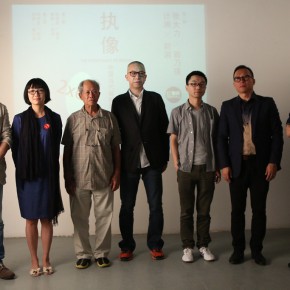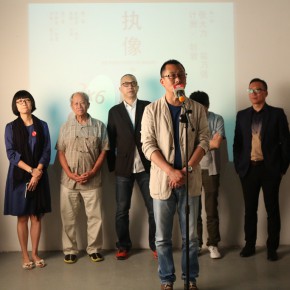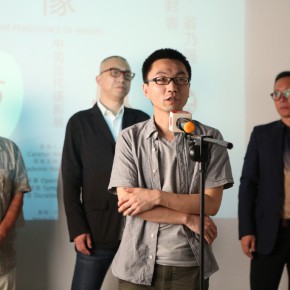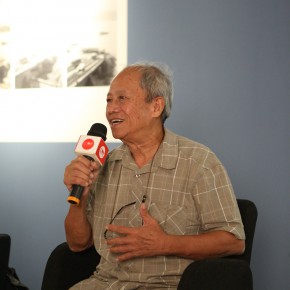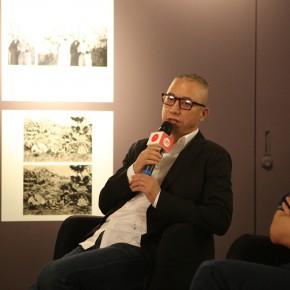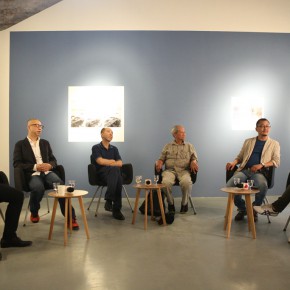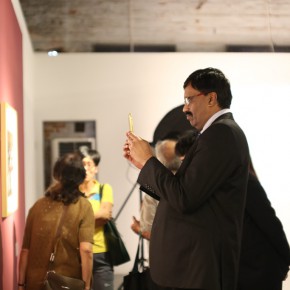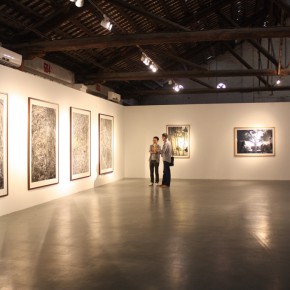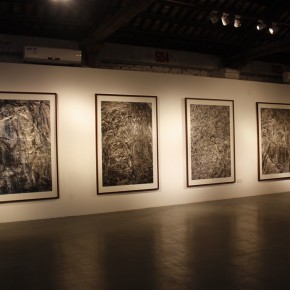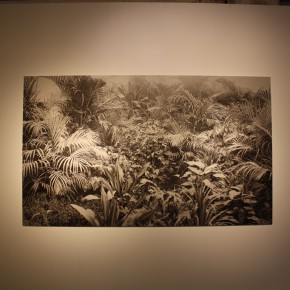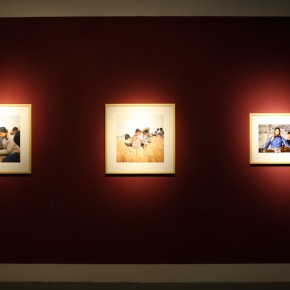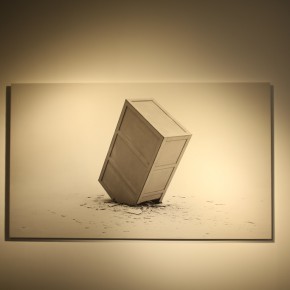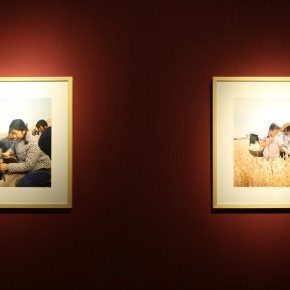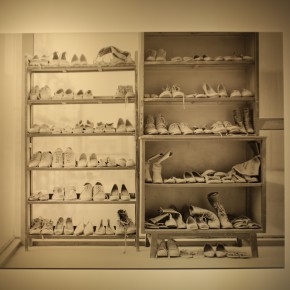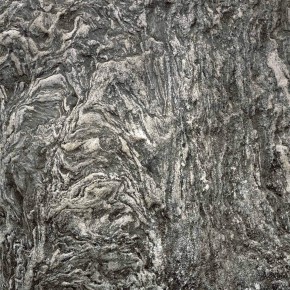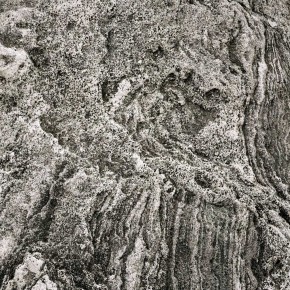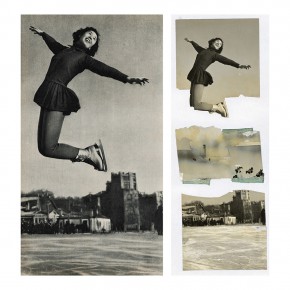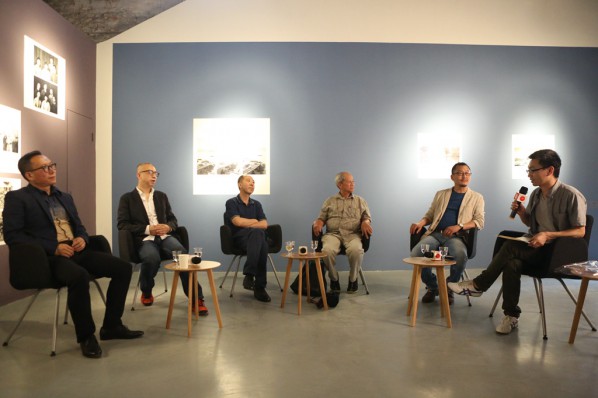
What is “history”? What is “reality”? At 4:30 pm on April 24, 2015, organized by the Redtory Art and Culture Organization and curated by Wang Chuan, Lu Mingjun serves as the Academic Host, the Chinese contemporary photographic exhibition–the Persistence of Images: 2×6 was inaugurated at E7, E9 in Redtory, Guangzhou. The exhibition starts from Redtory and the related cultural transformation under the background of industrialization and post-industrialization, themed on history, time, memories of the city and daily lives, to present deliberations on photography and the experiments of this medium from different perspectives.
12 artists were invited to participate into the exhibition, including Weng Naiqiang, Zhang Dali, Ji Zhou, Feng Yan, Zhang Chaoyin, Ta Ke, Yao Lu, Hong Hao, Feng Mengbo, Zhang Bo, Liu Zheng, and Ruben Lundgren, who present their works by the way of the 2×6 combination. In the season one, it presents the works by Weng Naiqiang and Zhang Dali in E9, the works by Ji Zhou and Feng Yan in E7.
Weng Naiqiang × Zhang Dali, Ji Zhou × Feng Yan
Most of Weng Naiqiang and Zhang Dali’s works are involved with history. However, they are not simple recorders and revolutionists. Their distinct attitudes towards history and photography constituted their enormous difference as well as a motif of History and Image. Mr. Weng has been devoting himself to paint historic events, while Mr. Zhang concentrates more on the results. They both show us the eternal but fragile relations between history and images. It is nothing to do with overturning the history itself but to reveal a historic view. As the witness of the history, these images are the motif of the circulation and will still make sense. The dialectic analysis is exactly a way of blending and integrating.
The exquisite quality and alienation that Ji Zhou and Feng Yan’s works have rendered involve their caution and criticism towards the traditional way of appreciating photos. However, the similarities cannot conceal the different methods they utilized for the same ultimate purposes. Feng Yan has hidden his wisdom in his selection of photographic objects, which is his rule, whereas Ji Zhou blends his sensitiveness and critical thinking into objects constructing and way of appreciating photos, which is his working principle. Thus, when we are trying to sense their consistency of pursuing the visual effect, precisely controlling the appreciating logic, and even simultaneously choosing the peaceful way, we cannot but have to be confronted with their obvious distinctiveness and with a hidden strength with softness and persistency.
Symposium of Chinese Contemporary Photographic Exhibition “The Persistence of Images: 2×6”
At 3:00 pm on April 24, 2015, Chinese Contemporary Photographic Exhibition “The Persistence of Images: 2×6” symposium was held at E9 in Redtory, Guangzhou. The symposium was presided over by Lu Mingjun, curator Wang Chuan, artists Weng Naiqiang, Zhang Dali, Ji Zhou and Feng Yan attended the discussion, to communicate and discuss the photographic problems that they concerned.
When we talk about photography today, it is not only limited in the category of “photography”. At present, Chinese contemporary photography and video has been cognized as rich as they can by the Chinese contemporary art world, we aim to voicing ourselves through this exhibition. It is necessary that the voice is both of a unique style and a special texture, which is also the basic element of the exhibition. In addition, the exhibition adopts the way of 2×6, which is also associated with the plant structure of Redtory that is mutually linked and isolated, and the structure of each section is associated with and also refers to the important problems in contemporary photographic art. At the same time, behind the problem, through the way of practice and works of the representative artists, to further explore the related topics of photographic art.
Curator Wang Chuan
I first learnt oil painting, and then studied photography, inspired by my art tutors Wu Zuoren and Zhan JianJun. The theme of oil paintings at that time focused on showcasing the social reality, such as the “Founding Ceremony of the People’s Republic of China”, “Langya Shan Five Heroic Men”, etc., these educations solidly influenced my photography. So I think photography shall seek truth from facts, instead of cheating, which was my perception of photography at that time.
Artist Weng NaiJiang
It is worth thinking about the problem that, in the era where current photography is popularized, the world is full of images, how to separate a work of photography from a simple “photo”. Once we were told that photography was scientific, being able to seize the moment, but in fact any “photography” is man-made, different light or angle might produce a completely different photo. Then it is whether photography is history or not? In fact, we can only say that history is only a part of the photographic history, and the medium for the study of history.
Artist Zhang Dali
At the beginning of the creation, I think about creating photography that is “dissimilar with photography”, but it still belongs to the category of photography. After the digital age, the possibilities of photography are increasingly rich, while the technical restrictions become less important gradually. In this case, we often question ourselves how to understand photography as well as the relationship behind photography, and what the meaning of photography is. When photography is becoming more and more convenient, I’m trying to slow myself down, for improved thinking and creation.
Artist Feng Yan
Because I once learnt painting, so I treat photography as a kind of “material”. Part of my work was finished in my studio, which belongs to the “subjective imaginative” photography, while a part is applied using a digital camera, which is similar to documentary work, but it still has a subjective element. For the show, I think it provides a new perspective, where we can view the development of current photographic art from different perspectives.
Artist Ji Zhou
When it comes to the development of photography, it needs to pay attention to several questions, on the one hand, the transformation of a photographer’s identity, on the other hand, the concept of “studio”. And the real “truth” might only exist in the gaps of all kinds of things, it perhaps is the distorted truth, or it tampers with the truth.
Academic host: Lu Mingjun
Chinese Contemporary Photographic Exhibition “The Persistence of Images: 2×6” season 1 will continue to June 29.
About the exhibition
Curator: Wang Chuan
Academic host: Lu Mingjun
Artists: Weng Naiqiang, Zhang Dali, Feng Yan, Ji Zhou
Duration: April 24 –June 29, 2015
Venue: E7 / E9, Redtory
Organizer: Redtory Art and Culture Organization
Text by Yu Ya, translated by Chen Peihu and edited by Sue/CAFA ART INFO
Photo courtesy of Redtory Art and Culture Organization


